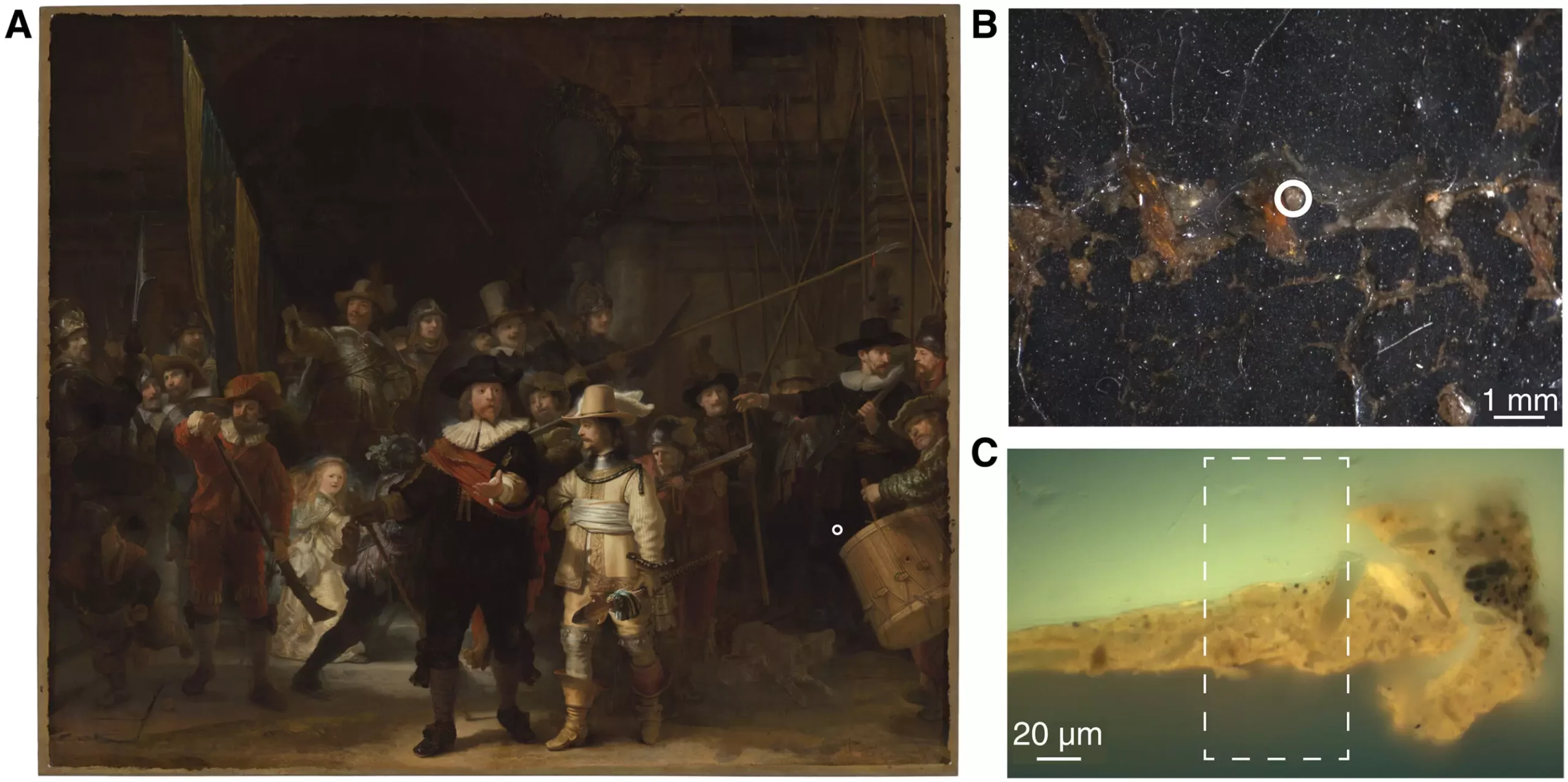Throughout history, Rembrandt has been recognized as one of the greatest painters of all time. His masterpiece, “The Night Watch,” continues to captivate audiences with its exceptional composition and technique. However, recent research has shed light on a previously unnoticed aspect of Rembrandt’s creative process – the use of lead-based impregnation in the canvas. This discovery, made during the Operation Night Watch project, highlights Rembrandt’s innovative approach to his work and challenges our understanding of his artistic methods.
One of the most striking findings of the study is the presence of a lead-rich layer below the quartz-clay ground layer of “The Night Watch.” This was revealed through advanced analysis techniques, including X-ray fluorescence and ptychography. Rembrandt’s contemporaries did not commonly employ lead-based impregnation, making this discovery all the more remarkable. It showcases Rembrandt’s willingness to experiment with new techniques and materials in his pursuit of artistic excellence.
Previous studies had shown that Rembrandt typically used a double ground layer in his earlier paintings. The first ground layer contained red earth pigments, followed by a second layer of lead white. However, the large size of “The Night Watch” presented unique challenges for the artist. In order to create a lighter, more flexible, and cost-effective alternative, Rembrandt opted for a quartz-clay ground layer. This decision ultimately proved to be advantageous, as the artwork was intended for display on a damp outer wall. By deviating from traditional methods and exploring alternative solutions, Rembrandt demonstrated his adaptability and commitment to preserving his masterpiece.
One of the primary motivations behind Rembrandt’s lead impregnation procedure was to improve the durability of “The Night Watch.” Historical records indicate that the common practice of using animal glue to prepare canvases could fail under humid conditions. To overcome this challenge, Rembrandt may have drawn inspiration from Théodore de Mayerne’s painting techniques, which recommended impregnation with lead-rich oil as a viable alternative. By implementing this unusual impregnation process, Rembrandt ensured that his artwork would withstand the test of time.
The discovery of the lead-containing layer in “The Night Watch” was made possible through cutting-edge analysis methods. By combining X-ray fluorescence and ptychographic nano-tomography, researchers were able to visualize sub-microscale chemical compounds in the lower layers of the canvas. X-ray fluorescence allowed for the investigation of heavy elements, while ptychography provided insights into even the lightest elements and organic fractions. This novel application of correlated techniques marks a significant advancement in the field of art conservation and further cements Rembrandt’s legacy as an artistic pioneer.
Seamlessly integrating technology and art, the study also utilized X-ray fluorescence scanning to create a lead distribution map of “The Night Watch” in its entirety. This map offers a comprehensive view of the presence of lead throughout the painting. Remarkably, it suggests that large semi-circular brushstrokes were used during the impregnation procedure, further supporting the hypothesis that Rembrandt purposefully incorporated lead into the artwork. Additionally, the map reveals an imprint of the original strainer onto which the canvas was stretched, providing valuable insights into the painting’s creation process.
The discovery of lead impregnation in “The Night Watch” not only enhances our understanding of Rembrandt’s pioneering techniques but also prompts a reevaluation of art restoration and conservation practices. It serves as a testament to the advancements made in analytical technologies and their crucial role in uncovering hidden secrets within artistic masterpieces. This research opens up new avenues for further exploration of Rembrandt’s oeuvre and underscores the need for continued innovation in the realm of art preservation.
Rembrandt’s use of lead-based impregnation in “The Night Watch” adds a fascinating layer to our appreciation of his artistry. Through his willingness to experiment and embrace new materials and techniques, Rembrandt created a lasting legacy. The Operation Night Watch project has not only shed light on this innovative process but also highlighted the importance of interdisciplinary collaboration in unraveling the mysteries of art history. As we continue to delve into the depths of Rembrandt’s work, we are reminded of the immense impact one artist can have on the world, even centuries after their passing.



Leave a Reply